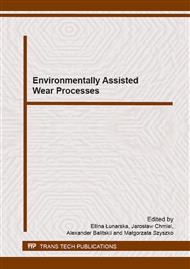p.7
p.13
p.19
p.25
p.33
p.39
p.45
p.53
p.59
Hydrogen Diffusion in Metals Assisted by Stress: 2D Numerical Modelling and Analysis of Directionality
Abstract:
Hydrogen diffusion within a metal or alloy is conditioned by the stress-strain state therein. For that reason it is feasible to consider that hydrogen diffuses in the material obeying a Fick type diffusion law including an additional term to account for the effect of the stress state represented by the hydrostatic stress. In this paper the hydrogen transport by diffusion in metals is modelled in notched specimens where loading generates a triaxiality stress state. To this end, two different approaches of stress-assisted hydrogen diffusion, one-dimensional (1D) and two-dimensional (2D), were compared in the vicinity of the notch tip in four notched specimens with diverse triaxiality level at two different loading rates. The obtained results show that the 2D approach predicts lower values of hydrogen concentration than the 1D approach, so that a loss of directionality of hydrogen diffusion, depending on both notch geometry parameters (radius and depth) and loading rate, appears when a 2D approach is considered.
Info:
Periodical:
Pages:
33-38
Citation:
Online since:
December 2014
Authors:
Price:
Сopyright:
© 2015 Trans Tech Publications Ltd. All Rights Reserved
Share:
Citation:


